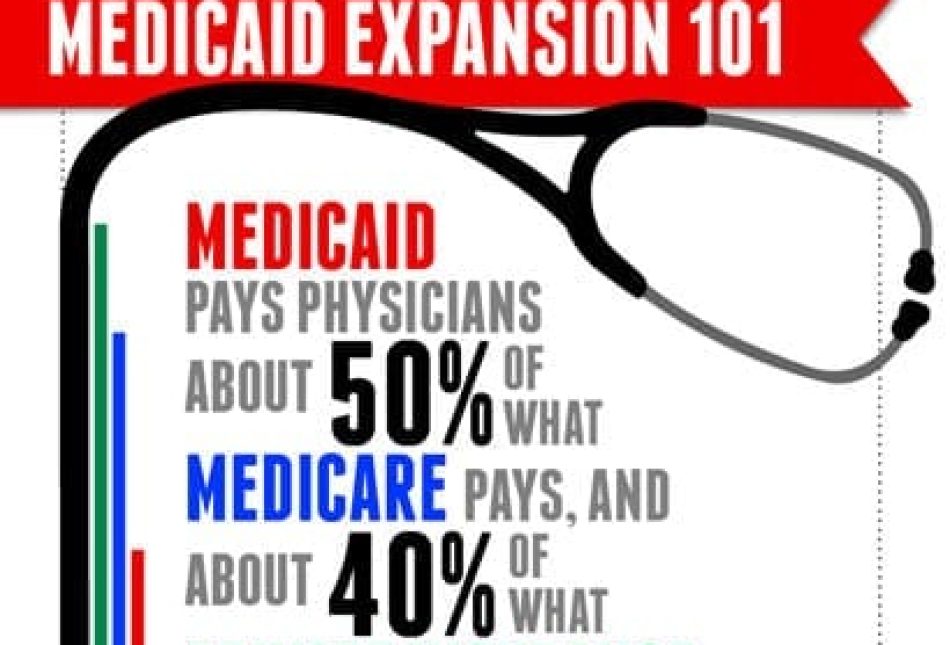Medicaid in New Mexico Needs a Long-Term Fix


The following op-ed ran in the Carlsbad Current-Argus on May 8, 2016.
New Mexico has a “Dr. Abernethy” problem.
In 2014, The Wall Street Journal explored the ways that Obamacare’s expansion of Medicaid was “straining some health-care systems that already don’t have enough doctors and staff” and challenging “medical practices’ bottom lines in ways that lead them to turn some away.”
Reporter Louise Radnofsky described how Dr. Holly Abernarthy, a family practitioner in Farmington,
has turned away all newly eligible Medicaid beneficiaries because she can’t sustain her practice expenses if her proportion of Medicaid patients grows much beyond her current 13 percent.
For a moderately complex office visit, she is paid about the same as [a] nurse practitioner: about $80 from Medicaid and about $160 on average from commercial insurance.
Says Dr. Abernethy, “I would love to see every Medicaid patient that comes through my door. If you give people coverage, they should be able to utilize it.” But making it work would extend her workday, and “I have three small children and I miss them.”
A year and a half later, things are about to get a whole lot worse for Dr. Abernethy — and her colleagues.
The New Mexico Human Services Department is preparing to implement the legislature’s mandate that it “reduce reimbursement rates paid to Medicaid providers.” The healthcare bureaucracy’s plan does not impact prevention or obstetrics, but cuts for inpatient, outpatient, and dental services would range from 1 percent to 8 percent. As the Associated Press noted, the “University of New Mexico Hospital would see the steepest reimbursement reductions — 8 percent for inpatient services and 5 percent for outpatient.” Previously “enhanced” rate for uncompensated care at 29 state hospitals would be reversed.
Why all the cuts? Medicaid, expanded by Governor Martinez under Obamacare, is spewing a river of red ink. It’s projected to generate a deficit of $417 million in the 2016 and 2017 fiscal years. And the future is likely to be even darker. By 2020, the state estimates that 43 percent of New Mexicans will be signed up for “free” healthcare.
Last year, the legislature’s Health and Human Services Committee asked the Rio Grande Foundation to provide an analysis of Medicaid’s costs and benefits in the Land of Enchantment. Paul Gessing, our organization’s president, explained to legislators that nationally, “over half of providers no longer accept Medicaid patients,” and of the “doctors who do accept Medicaid, the provider networks are narrow and nearly one-third face wait times of over a month.”
The committee’s far-left members assured us that such conditions don’t prevail in New Mexico. Except … they do. A recent investigation by the Legislative Finance Committee uncovered average Medicaid wait times “from three weeks to nearly two months,” as well as “significantly fewer [primary care providers] accepting new Medicaid patients than has been reported by the [managed care organizations].”
With reimbursements about to decline, look for even longer wait times and more providers denying services to Medicaid patients. It’s Econ 101 — a subject the proprietors of New Mexico’s taxpayer-funded healthcare empire consistently flunk.
Another inconvenient reality willfully ignored by Medicaid’s fans: the research consistently showing that the program generates less-than-impressive outcomes. In Oregon, where Medicaid was broadened prior to Obamacare, a sweeping study concluded that expansion “produced no statistically significant effects on physical health.”
Ineffective and outrageously costly, Medicaid is an albatross around the necks of taxpaying New Mexicans. It’s time for the state to reverse its disastrous expansion. Such a return to fiscal sanity is possible. In the words of the Foundation for Government Accountability’s Jonathan Ingram, options include the elimination of “Medicaid expansion eligibility, effective on a specific date,” or a freeze “at current levels,” allowing “enrollees [to] cycle off as their conditions improve.” Next up: A lobbying effort with other states to implement meaningful, market-oriented reforms of a program that has gotten completely out of control.
Tinkering with reimbursement rates can cut costs in the short run, but it’s no long-term solution to New Mexico’s Medicaid mess. Policymakers need to think bolder, and bigger.
D. Dowd Muska (dmuska@riograndefoundation.org) is research director of New Mexico’s Rio Grande Foundation, an independent, nonpartisan, tax-exempt research and educational organization dedicated to promoting prosperity for New Mexico based on principles of limited government, economic freedom and individual responsibility.
